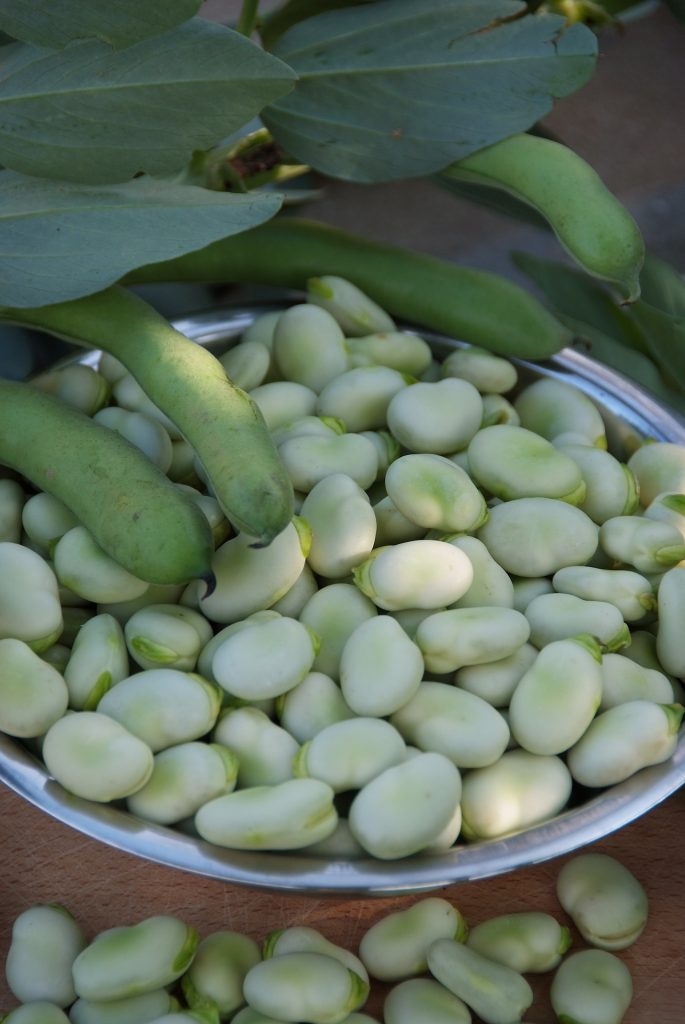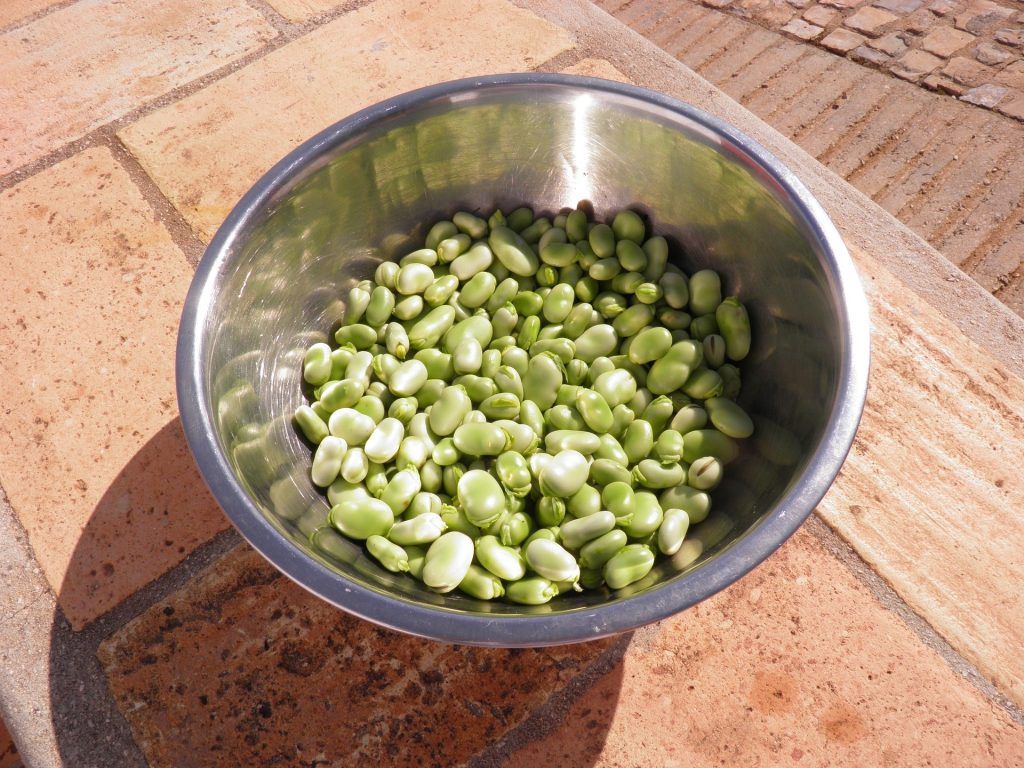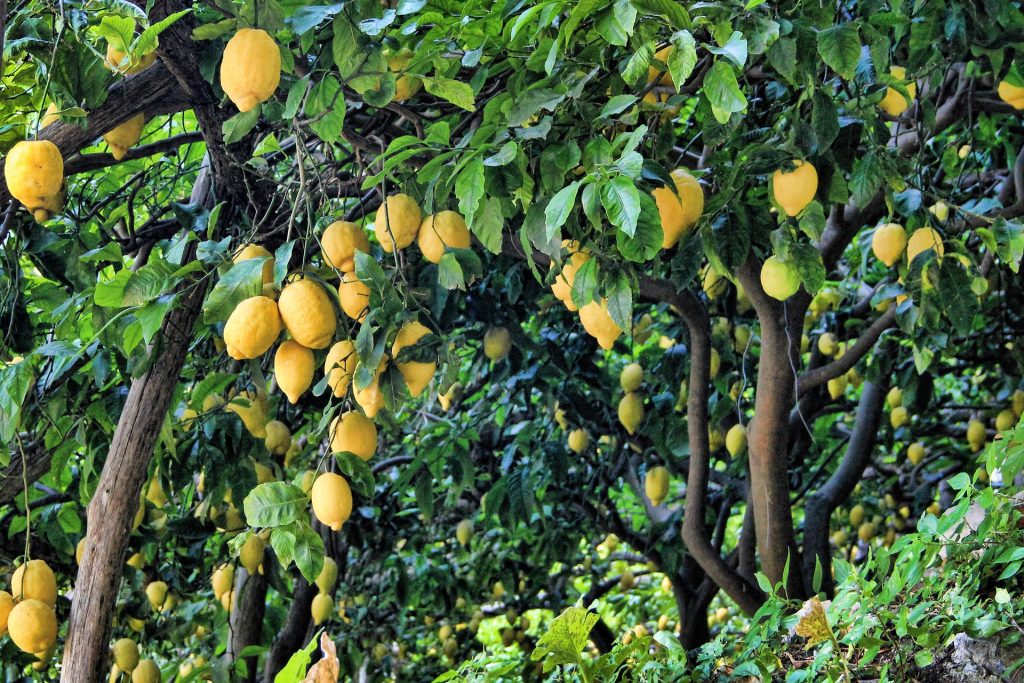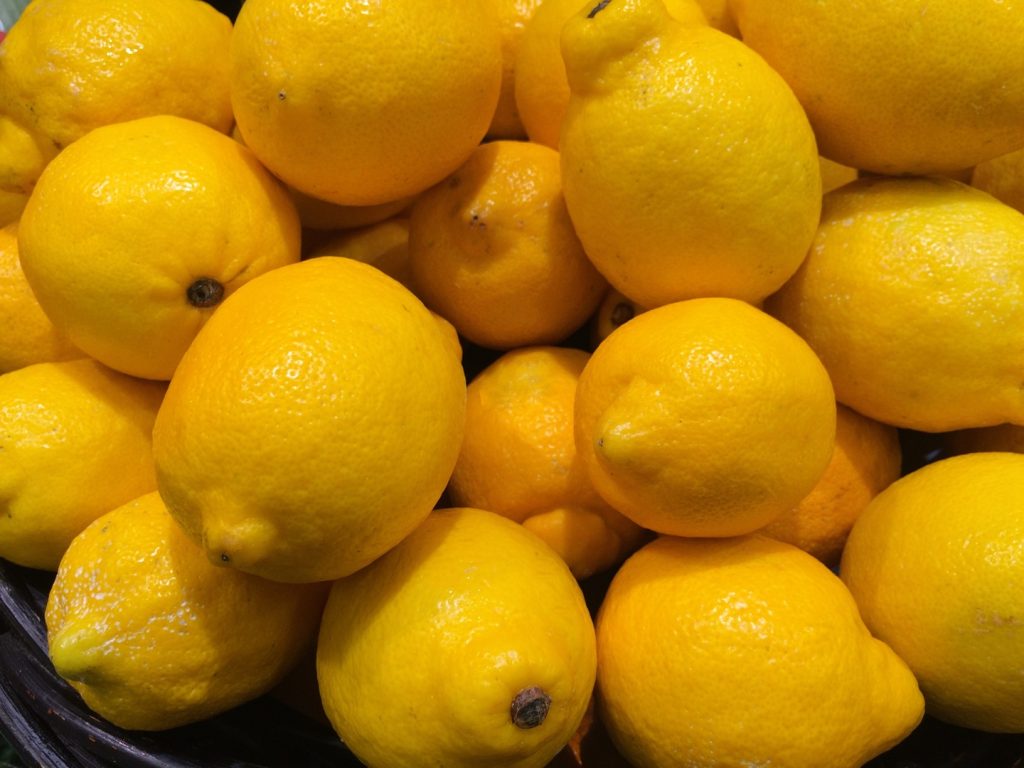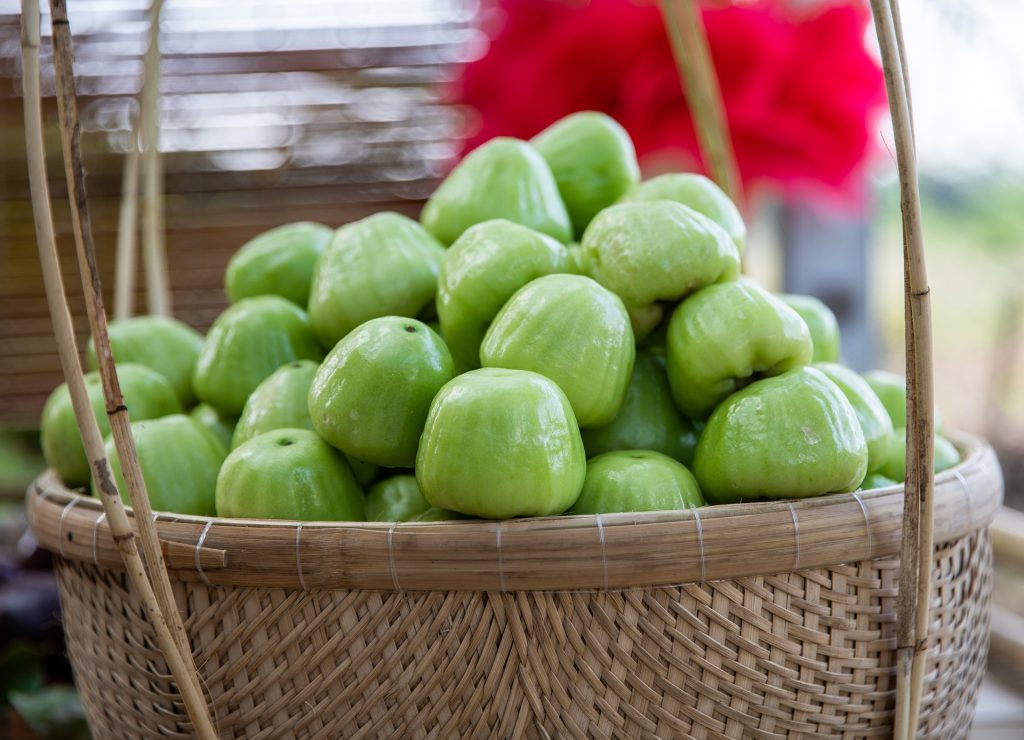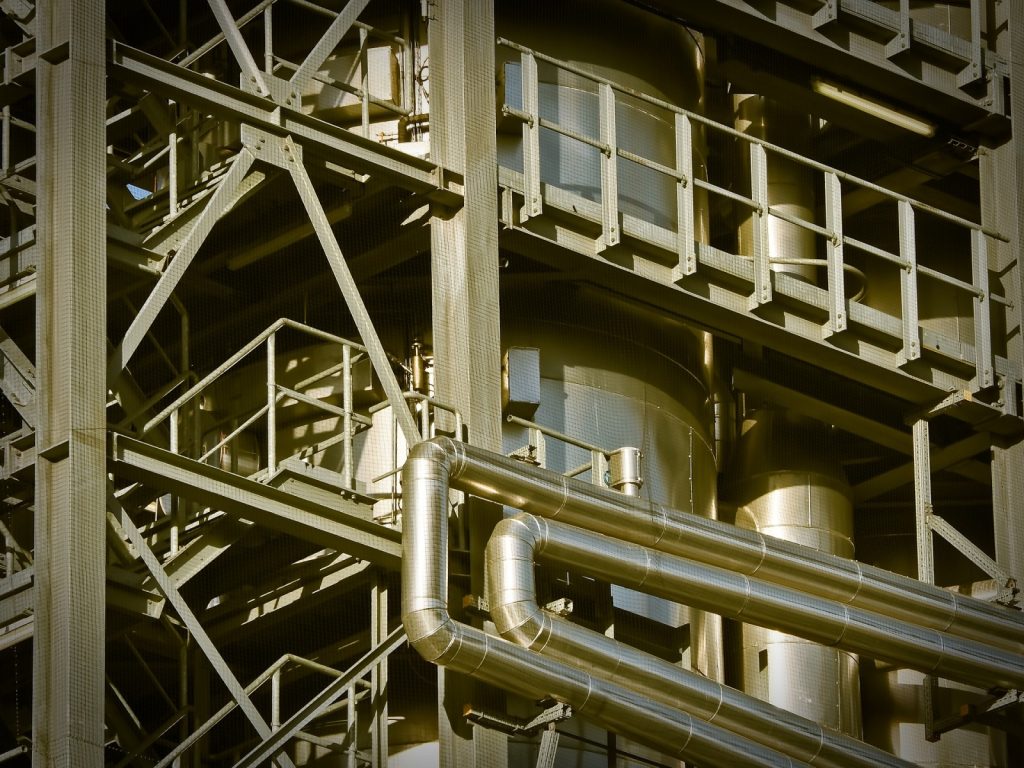Blog
Find articles that matter. From trading to shipping, trends to valuable goods, you can deep dive into everything you need.
Latest Posts
Blog
Kiwi is a type of fruit belonging to the Actinidiaceae family. This native Chinese fruit is about 5-8 cm in size and has thin and light brown skin. The fruit has rows of small edible black seeds and light green or golden flesh. Kiwi has a unique flavor, sour and sweet, and has a soft texture.
The roots of the kiwi date back to the 12th century. Until the 20th century, the fruit was grown only in central and eastern China, and commercial cultivation was first established in New Zealand. It was then popularized by American and British soldiers serving in New Zealand during World War II and spread around the world. Today, China and New Zealand remain the leading countries in kiwifruit production and exports. Italy, Greece, Belgium, Turkey, and Chile follow these countries. In this article, detailed information is given about kiwi production, usage areas, and leading countries in exports.
Grown Conditions of Kiwi
Kiwi is a fruit that grows under forests and is native to Southeast Asia. First cultivated only in China, the fruit is now grown in many countries around the world. Especially Mediterranean countries have shown a demand for kiwi cultivation. Although we see the same type of kiwis in markets, grocery stores, and online shopping sites, there are nearly 50 varieties of kiwis.
Kiwi is a vining plant. Therefore, the soil in which the kiwi grows should be deep and light. Kiwis need rich soil in order to get a good yield. In addition, kiwis are severely damaged by strong winds. Therefore, it is not possible to grow kiwis in a windy area. In addition, kiwi is a fruit that is resistant to cold climates. Indeed, it is not suitable for growing in high temperatures.
Usage Areas and Benefits of Kiwi
Kiwi is used in salads, desserts and meals because it has an extremely delicious taste. In addition to its interesting flavor, it is often preferred especially in winter months due to its rich vitamin content. Kiwi is a fruit with a high vitamin C content, just like oranges and lemons. For this reason, it is often preferred because it helps to protect the immune system during the cold winter months.
In addition to all these, kiwi offers benefits in skin health and beauty. The vitamins E and C contained in it have a feature that prevents skin deterioration. In addition, vitamin C contributes to collagen production in the body, giving the skin a healthy appearance. Kiwi also supports the acceleration of the digestive system thanks to the fiber content.
Top Kiwi Exporting Countries
Interest in the delicious fruit, which has an egg-sized shape, has increased in recent years. Its delicious taste, its health benefits and the increase in its areas of use have also led to an increase in this interest. For this reason, after China and New Zealand, especially Mediterranean countries have turned to kiwi production and exports.
Turkey
Turkey is one of the countries that started kiwi cultivation late. However, with the increase in the number of newly established and productive gardens, it is among the most important countries in the world for kiwi production. According to recent data, Turkey's kiwifruit production is about 64 thousand tons per year. In addition, Turkey's share of exports has increased 15-fold in the last five years to about 5,000 tons.
Yalova is the leading city where Turkey produces the most kiwi. Yalova, Bursa, Mersin, and Rize provinces produce about 19 thousand tons. This statistic accounts for about 57.1% of Turkey's total kiwi production area. There was a significant increase of 32% in kiwi production areas in Turkey in 2020 compared to 2016.
Production of the kiwi has been increasing every year, reaching approximately 89 thousand tons in 2022. In addition, the contribution of kiwi export to the national economy is increasing at the same rate. For 2022, the contribution of kiwi export to the national economy is expected to reach approximately 800 million Turkish liras.
Turkey's kiwi production has increased by 67.8% in the last five years. Also, Turkey's kiwi exports amounted to 4,783 tons in 2020. In the first four months of 2021, Turkey's kiwifruit exports amounted to 5,185 tons. In addition, Turkey exported the most to Spain with about 1,155 tons. Approximately 935 thousand kilograms of kiwi were exported to Russia, which ranked second.
New Zealand
New Zealand, the first country to produce kiwi after China, ranks first in kiwi exports. According to 2021 data, New Zealand exported kiwi worth 2 billion dollars. New Zealand's kiwi exports account for 50.9% of world kiwi exports. New Zealand's largest importers include EU countries, China, Japan, and Korea.
Italy
In Italy, a Mediterranean country, the demand for kiwi cultivation is quite high. Thanks to the importance given to kiwi production, there has been a significant increase in kiwi exports in the country. In 2021, Italy realized exports worth 559.2 million dollars. Italy's exports increased by 6% compared to last year. In addition, in 2021, Italy accounted for around 14.3% of world kiwi exports.
Belgium
Belgium has been a fast-growing country in kiwi production since 2020. The country is reaping the results of the importance it attaches to kiwi production with exports. According to data from 2021, Belgium exported kiwifruit worth 370.4 million dollars. Belgium's kiwi exports have increased by 66.8% in the last two years.
Greece
Kiwi production also takes place in Greece, which has similar climates to Italy and Turkey. Greece, one of the leading countries in kiwi exports, exported kiwi worth 231 million dollars in 2021. This export corresponds to 5.9% of world kiwi exports. In addition, Greece increased its kiwi exports by 18% compared to last year.
Import Wholesale High-Quality Kiwi with Turkish Goods
Do you want to import delicious and high-quality wholesale kiwi? Turkish Goods supplies you with high-quality kiwi grown in the best conditions, regardless of your location. Within 48 hours with a guarantee of the best offer in the market, importing kiwi in bulk is easy with Turkish Goods. Click here to import wholesale bulk kiwi with the guarantee of Turkish Goods and to get support from our expert team.
Bioenergy is one of the most important types of renewable energy provided from materials obtained from biological sources. Pellet is a type of bioenergy that attracts the most attention nowadays. One of the most important reasons for the increase in the use of pellets is the energy crisis, whose effects are felt globally. Also, pellets have become a highly preferred fuel type because they are both economical and environmentally friendly. In this article, we will discuss all the details you need to know about wood pellet fuel. Let's explore together the advantages of pellets, how pellets are made, areas of use, and much more in this article.
The Journey of the Pellet Fuel
Pellet fuel, a type of bioenergy, is the grinding of all kinds of wood, wood residues and forest residues into sawdust powder and then pressed, and compressed with high pressure. As a result of this process, the small fuel particles used to generate energy are called pellets.
The journey of pellet production started with a crisis. Pellets, which emerged as a result of the oil crisis in the 1970s, are today the most important source of renewable and environmentally friendly energy. In particular, Sweden has been a pioneer in the development of wood pellet fuel. With growing environmental concerns, energy crises, and concerns about the fossil fuel consumption, wood pellets have been recognized worldwide as a reliable and tangible alternative. Today, the use of pellets is widespread in many areas such as residential heating, electricity generation, and heat production in energy sectors.
How is Pellet Fuel Made
Pellet fuel is produced from forest waste without any chemical process. The first step in the production of pellet fuel is to completely pulverize forestry waste such as dry branches and twigs. These pulverized wastes are then dried in an oven to reduce their moisture content.
The dried materials are pressed under high pressure to form pellets with a diameter of 6-8 mm. Cooling is applied to the pressed pellets. Finally, they are packaged and made ready for use. As a result of the application of these processes, the combustion and energy efficiency of the same wood product increases by 300%, making a great contribution to nature, the environment and the economy.
Advantages of Pellet Fuel
Pellet is an economical renewable fuel type that does not harm the environment compared to fossil fuels. The advantages of pellet fuels are as follows:
Cost-Effective
Pellet fuels stand out thanks to their economic advantage. Compared to fossil oil or natural gas, pellet fuels are very cost-effective. In this way, they are frequently preferred for heating and energy production. Also, the combustion efficiency of pellet fuel is higher than other fossil fuels. For example, while the combustion efficiency of pellet fuel is 97%, the combustion efficiency of coal fuel is 78%.
Eco-Friendly
Pellet fuels are produced without any chemical process. Also, they are produced without harming the environment and do not contribute to the concentration of carbon dioxide in the atmosphere.
Wood pellet fuel has carbon emissions below the thresholds for acceptance according to the Kyoto Protocol. In this respect, it is a type of fuel that does not harm the ozone layer. The amount of waste after the use of pellet fuel is limited.
Secure
Pellet fuels can be safely stored in a dry room for a long time. In addition, this fuel is not easy to ignite. In this way, they do not pose a significant fire hazard. Indeed, fossil fuels such as gas, diesel, and coal are easily flammable and contain chemical and noxious odors.
Usage Areas of Pellet Fuel
Pellet fuel, which is one of the bioenergy sources, is used for heating and industrial purposes.
It is possible to classify pellet fuel as wood pellets and agricultural waste pellets. It is a type of energy that is widely used especially in European countries, with green transformation. Pellet fuel can be used in all areas that require heat. Pellet fuel is increasingly preferred in homes, sports facilities, public spaces, industrial drying facilities, and much more areas.
Rising Demand for Pellets
The need for renewable energy resources has increased in a period when the effects of the energy crisis and climate change are being felt intensely. Large-scale international developments such as the Russia-Ukraine War and Covid-19 have brought many adverse events around the world. In addition, the rapid increase in natural gas and oil prices has led to an energy crisis in many countries.
In addition to all these, significant international treaties such as the Kyoto Protocol are pushing countries to decarbonize and use more environmentally friendly fuels. Governments in many countries are providing financial incentives and subsidies to encourage the use of renewable energy sources for energy consumption. Pellet fuels meet the needs as a reliable and affordable solution to decarbonize the world. All these reasons increase the demand for pellet fuel.
Import Wholesale High-Quality Pellet Fuel With Turkish Goods
Pellet fuel is in high demand worldwide due to its economic and environmentally friendly nature. Pellet fuel, which has become widespread in the aftermath of the oil crisis that has had a devastating impact on the whole world, is being used in more and more areas every day. Importing pellet fuel, which offers a great solution to the world's energy crisis and rising heating costs, can provide you with many advantages.
If you need a reliable supplier to import pellet fuel wholesale, Turkish Goods is here for you. Within 48 hours, we deliver the highest quality pellet fuel regardless of your location with the best offer guarantee. Our team of experts will manage your pellet fuel import process from end to end, providing you with flawless service. Contact us to import wholesale high-quality pellet fuel.
Deep shipping refers to the transport of goods across oceans and between continents by sea. Large ships are employed in this method of cargo transportation to convey supplies and merchandise from one port to another. The open seas or deep oceans are the typical operating environments for these ships. 2-stroke engines are usual for deep-sea cargo ships.
The deep sea shipping industry is less affected by seasonality and geographic fragmentation. However, the market is impacted by the economic development and freight rates of particular countries. Short sea shipping, which involves moving freight over shorter distances, is also utilized in addition to deep sea transport.
How Does Deep Sea Shipping Work?
Larger vessels designed to travel through oceans and high seas are part of deep-sea shipping. Freighters, or big cargo ships, are frequently used. These ships are designed to transport large cargoes. Up to 10,000 shipping containers can be carried on deep-sea ships.
Container terminals are specialized port facilities used for cargo ship loading and unloading. After the cargo containers are loaded onto the ship using a crane and conveyor belt system, the ship departs from these terminals. Larger ships travel from the main regional port to the shipping lines. Smaller vessels transport containers from other smaller ports to their destination through regional short sea deliveries. The distance to be covered can range from a few days to many weeks, depending on the route.
The cargo containers are delivered when the cargo ships reach their target destination. Loads are also delivered to the point using cranes and truck systems. The cargo ships are returned to the main port when the cargo release is accomplished.
What are the Benefits of Deep Sea Shipping?
The main advantage of this mode of transportation is that it is relatively safe and reliable. Deep-sea vessels have a significantly lower chance of being damaged or lost in the open seas or oceans.
Furthermore, deep sea shipping routes have been planned as secure, time-tested routes. As a result, the risk of delays and accidents is relatively minimal, and deep sea shipping is regarded as one of the safest types of transportation. Another significant advantage of this kind of transportation is that the ships are designed to safely transport dangerous goods.
Shipping goods over great distances by sea is the most environmentally friendly mode of transportation. Deep sea shipping is also known as the most environmentally friendly mode of long-distance transportation. Many shipping businesses are attempting to enhance their environmental practices in order to lessen their environmental impact. Deep-sea shipping uses less energy than any other mode of international transportation.
You may benefit from sea freight shipping without compromising quality or security. Since the vessels are designed to carry enormous volumes of cargo, smaller cargoes can be combined, resulting in significant cost savings. The ability to transport items in large quantities allows for economies of scale to be achieved.
What are the Disadvantages of Deep Sea Shipping?
Although this mode of transportation has massive benefits, it also has drawbacks. The biggest consequence of these disadvantages is that the goods transportation process takes a bit longer. Deep sea cargo ships travel at a reduced speed than other vessels.
Another disadvantage is that it necessitates specialized equipment or knowledge, which increases the overall shipping charges. As a result, an expert is required to track market movements and provide useful information. Low demand and hence low commodity prices have a detrimental effect on deep sea shipping. Even though the effect of weather conditions is minimal, it is common to experience delays related to seasonal difficulties. Regardless of these risks, deep sea shipping is often safe and efficient.
Some challenges may arise during deep sea freight shipping. This industry is constantly evolving and updating due to factors such as increasing fuel costs, rising shipping container rates, and the requirement to comply with new environmental requirements. These challenges can be quickly overcome by making a few adjustments. These improvements include the development of new routes that are less vulnerable to severe weather conditions, as well as the investment in new technology and equipment.
What Will Deep Sea Shipping Look Like in the Future?
With the advancement of e-commerce, the deep sea shipping industry is taking shape. This sector is being influenced by a variety of developments. Some of these various factors include growing fuel costs and the requirement to adapt to changing environmental requirements. Growing demands and new developments are pushing the development of transportation efficiency technologies. As e-commerce develops, the demand for dependable shipping will also grow. The sector has numerous opportunities to expand and develop.
Deep sea shipping involves a number of considerations. The most important of these factors is that shipments be correctly wrapped and tagged in order for cargo to operate safely in this method of shipping. If such details are taken into account, the goods can be delivered quickly and safely.
Deep-sea freight shipping is essential to the global economy. This mode of transportation has both economic and social implications. It enables businesses to efficiently transport goods all over the world. Deep-sea shipping supports trade and economic progress by creating more jobs and boosting local economies.
Deep sea shipping is a cost-effective method of transporting goods that offers numerous advantages over other modes of transportation. With the assistance of a qualified and professional organization, the goods transportation process can be handled effectively. Although it has some drawbacks, planning and experience can assist you in overcoming these difficulties. With the aid of a vast transportation network, every logistical problem can be solved.
The balance between exports and imports is crucial for every nation, notwithstanding ongoing global changes, discussions, and political issues. The study of export statistics helps to identify a nation's level of development. Plans that show the monetary behavior of nations are annual development plans and initiatives. What has Turkey decided for 2022, then? How can the export performance of Turkey be assessed in 2022?
According to the general trade system, exports increased by 18.2% in the January-August period of 2022 compared to the same period of the previous year and reached 165 billion 608 million dollars. When this data is considered throughout the period, it reveals a very promising result. Aiming to increase exports in direct proportion to the increase in production, Turkey continues to develop day by day. There is a specific improvement in exports in every field from raw material production to processed products, from fruits and vegetables to automotive.
Every Month Export Score Increased Compared to the Previous Month
Turkish exporters keep repeating that they believe the annual goal will be attained before the year ends. However, there are rumors that business leaders are reevaluating their goals as new orders decline amid indications of a worldwide slowdown and inflationary pressure. Even though official sources have not yet released the 2022 report, it is impossible to avoid seeing developments by glancing at the monthly evaluations.
Providing information about export figures, Minister Muş stated that exports continued to gain momentum in the first 10 months of this year. He also stated that it reached the highest monthly export value in October, as it does every month. Turkey's exports gained more momentum each month compared to the previous month. Exports seem to continue this upward trend at the end of 2022.
Exporters managed to reach record sales every month and in 21 of the previous 23 months up through August of this year. In summary, exports have increased significantly during the previous two years as well as in 2022.
Turkey's Export Targets and Achievements in 2022
The government and experts anticipate that exports, which totaled $225.4 billion at the end of 2021, will rise to $250 billion this year. As of July, according to TİM Chairman Mustafa Gültepe, rolling 12-month exports were more than 248 billion dollars.
Furthermore, Gültepe stated:
"At this moment, we perceive that we will exceed our annual export objective of $250 billion in 2022 and leave behind a very important milestone."
The target of 250 billion dollars was also highlighted by President Erdogan at most meetings and summits. This target was left behind when we look at Turkey's export values. The increase in export figures before the end of 2022 reveals that Turkey has gone beyond its targets.
Reminding that national pride Togg took off the first mass production models on Republic Day, Muş also talked about the pride and happiness they felt. In light of all these comments, this situation also reveals that Turkey's success in export-oriented production continues comprehensively.
According to the latest export orders index, exports in nations like Germany, the United States, the United Kingdom, and China are predicted to slow down, and the foreign trade imbalance between the Eurozone and the EU hit a record high in August. On the other hand, since the epidemic started, energy prices have caused a massive wave of inflation around the world. Turkey has attained a high level of integration with the global economy and commerce. Despite being negatively impacted by these global events, Turkey continues to boost its industrial production.
In conclusion, Minister Muş also drew attention to Turkey's position amid these global troubles. The global political and economic crises in the world slowed down Turkey's production flow. Yet, it did not stop and the visible development was reflected in Turkey's exports.
Global Demand in the 2022-2035 Period
Although the end of 2022 export evaluation has not yet been released, the Turkish Exporters' Assembly's 2022 Export Report contains expectations and intentions. Particularly, there are sectoral analyzes that can be realized between 2022-2035.
The regressions based on the monthly export data for the years 2010–2021 have been taken into account while computing the export prediction in the sectoral breakdown of Turkey. Based on this analysis, a sectoral breakdown of Turkey's exports in the future was calculated.
The analysis predicts that in the years 2022 to 2035, the "Automotive Industry" will come out on top, followed by the "Chemical Substances and Products" sector. The "Steel" industry is anticipated to come in third, followed by the "Apparel and Apparel" sector in fourth place. Finally, the "Electricity and Electronics" sector will come in fifth.
Top 10 Sectors in Global Demand
According to this report, in the 2022-2035 period, the top 10 sectors that are important in global demand and the top 10 sectors in Turkey's exports take place. The sectors that are expected to come to the fore in Turkey's export ranking are as follows:
- Automotive Industry
- Chemical Substances and Products
- Steel
- Ready-to-Wear and Apparel
- Electricity and Electronics
- Ferrous and Non-Ferrous Metals
- Textile and Raw Materials
- Cereals, Pulses, Oilseeds, and Products
- Machinery and Parts
- Jewelry
Sectors Expected to Increase in Demand
In addition to these sectors, the ranking of the sectors that are expected to increase in global demand is given as follows:
- Chemical Substances and Products
- Electricity and Electronics
- Automotive Industry
- Machinery and Parts
- Jewelry
- Cereals, Pulses, Oilseeds, and Products
- Ferrous and Non-Ferrous Metals
- Mining Products
- Furniture, Paper, and Forest Products
When we examine these two lists, besides the differences in the rankings, the Furniture Group and Mining Products are included in the global demand list. When we examine Turkey's 2022 exports according to this demand list, there is a considerable export rate in both mining products and furniture, paper, and forestry products.
To give an example, Turkey's exports of furniture, paper, and forestry products increased by 22.6 percent in the 9 months year over year. They reached 6.2 billion dollars. Similarly, there is an increase in mining products. Mining product exports increased by 13.8 percent in the first 9 months of this year compared to the same period in 2021. They reached 4 billion 988 million 864 thousand dollars. In short, Turkey continues its production responding to global demand in terms of foreign markets. In this way, it is noticed by importers as it operates in many sectors.
The 2022 export evaluation report has not been published yet. However, despite the effects of the global crisis, Turkey has exceeded its expectations and targets regarding the supply-demand balance.
The term "import procedure" refers to the entire process of buying items from any other country. In terms of import laws and rules, the stages involved in import trade vary from one country to the next. However, every government's policies are designed to prevent harm to itself. Therefore, the first step before beginning the import should be for business owners who decide to import to thoroughly study the procedures and the laws of the country where they are acquiring. The government regulates import trade in the majority of nations.
Import trade is authorized by the government to protect foreign exchange and domestic industries. Importing goods is subject to a defined and controlled process that protects both the exporter and the importer.
How Do Import Processes Work?
Although the import process is very comprehensive, it can be explained with specific titles. As we mentioned, we can summarize the general approach in nine steps, although it differs in each country.
1. Trade Enquiry
The importer makes a formal written request for information from the exporters, including details on the price, the quality, the quantity, and numerous export terms and conditions. The exporter prepares and transmits every detail and price quote they have regarding the product and the importation procedure in response to the importer's trade inquiry.
2. Getting an Import License and Quota
Another stage, seen as the import stage, is to prepare the license and learn the quota. So, what are import licenses and import quotas?
Import License
A national government may authorize the importation of particular items into its borders by issuing an import license. When import permits are used to discriminate against the products of another nation to shield domestic businesses from international competition, they are seen as non-tariff trade barriers. The volume of imports permitted by each license is specified, and the overall volume permitted cannot be greater than the quota.
Import Quota
A sort of trade restriction known as an import quota places a physical cap on the volume of an item that may be brought into a nation over a specific time frame. Like other trade restrictions, quotas are frequently employed to the advantage of the economy's producers of a particular good.
3. Getting Foreign Currency
Another step is for the importer to make a foreign cash installment request, which includes the conversion of foreign banknotes to the currency of the exporter. Some countries may also accept direct advance import transfers instead of buying foreign currency. This stage is actually quite extensive. The money is kept in the bank until the transaction is completed because the security of both parties is the main point.
4. Placing the Order
Another step is the importer's request for goods from the exporter. To place an order, an agreement is reached on issues such as price agreement and product quantity.
5. Sending a Letter of Credit
This step is related to buying foreign currency. It is a frequent payment technique in international commercial transactions where the issuing bank agrees to pay the exporter as long as the exporter abides by the letter of credit's terms and conditions. The exporter's goods are safeguarded in this way.
6. Getting the Required Documents
If you have finished all the previous procedures, it is now time for the crucial paperwork. You must have certain paperwork to import into any country, in addition to the documents required by your own. The "Bill of Entry" is the most crucial document utilized in the import process. This document is prepared when the importer learns that the goods have arrived at the port. This document includes information about the quantity, price, and weight of the goods to calculate the customs tax. Upon the goods' arrival at the port, the importer makes arrangements for the payment of the advance price. This protects the importer from high penalties.
7. Customs Formalities and Clearing of Goods
In general, in all ports of a country connected to international destinations, customs offices are responsible for controlling goods entering or leaving the country to perform these functions. A country's customs office has the power to seize or, if necessary, dispose of goods. Therefore, the imported goods must be registered and checked. Providing the necessary customs documents allows you to receive your imported goods comfortably. Globally, the customs clearance procedure is possible. However, depending on the nature of the commodities, some may have unique criteria. For products that are deemed objectionable or require special documents for import and export, you must conduct thorough research.
8. Paying the Amount Due
And the payment stage is now ready to begin. Cash, letter of credit, documented collection or policy, open account, and consignment are the five primary payment methods in international trade, in order of security. The method that is safest for the exporter is, of course, also the least safe for the importer. Mutual benefit determines how much is paid. You are required to make payments for your purchases using the payment method you have chosen.
9. Achieving Deal Closure
We've reached the end of the process, or the last stage, of the agreement. The importer typically pays the pier dues when the goods are received and all controls are finished, with the completion of all agreements and receiving the products. Your products are currently in your possession.
Who Can I Trust in Import Processes and What Should I Do?
In import processes, importers generally prefer experienced people based on their experience. Supply companies are among the most logical choices preferred by importers lately. However, there are two questions that those who will have a new experience in importing think most:
- Who can I trust in import processes?
- What should I do?
The answer to both of these questions is simple. You should deal with brands that have experience and are sure of their reliability. And you should get information from people who are experts in all processes.
If you need quality and reliable goods, you can benefit from the experience of Turkish Goods. With the guarantee of quality and reliable price, your import is made most easily. You can also take a look at our other articles for more detailed information about our export processes and the delivery of products.
As we approach the winter months, of course, the biggest demand is for citrus products. Orange in particular attracts attention as the most demanded winter fruit worldwide. Delicious, juicy, and rich in vitamins, oranges are a type of fruit known on seven continents.
Due to their high vitamin C and antioxidant content, oranges are one of the citrus fruits that people have enjoyed and cultivated since ancient times. The southern Himalayan foothills, eastern Assam, northern Myanmar, and the Yunnan province in western China are the locations of the orange gene center.
In Roman times, the orange was regarded as the world's richest’s fruit. In the gardens of wealthy Roman families, greenhouses were employed to keep oranges from the cold, but with the fall of the Roman Empire, citrus fruits perished along with wealthy households. Oranges to Europe were brought by the Genoese trade between 1400 and 1500 C.E.
The orange is now a fruit that can be grown almost everywhere, with the expansion of trade networks, the development of technology, and the increase in transportation types. Which countries are the leaders in orange production? Which are the leading countries in export besides production?
Leading Countries in Orange Production
According to USDA data, a total of 49 million tons of oranges were produced in the world as of the 2021/22 market year. In addition, around 103 million tons of citrus fruit were produced. 47% of this production belongs to orange.
Oranges were the citrus fruit with the largest demand, even though more and more people were using citrus fruits in other contexts.
Especially in fruit juice, dried orange peel, and slices, as well as essences, is gaining in value in terms of demand. The presenting forms of orange have also increased as more people choose organic products in the modern world. Brazil is ranked first with a share of 34% of the global orange output in the market year 2022–2023, according to the production shares of the top-producing nations. The EU comes in third with a production of 12%, while China comes in second with a share of 16%. Mexico produces 9% of the total amount of goods produced worldwide. With 1.8 million tons of orange output, Turkey is ranked 7th in the world.
While a very important part of Brazil's orange production consists of industrial varieties, the most common industrial orange variety is the Pera orange. Since China is the homeland of citrus fruits, it has serious production values and cultivates both industrial and table varieties.
Leading Countries in Orange Export
Exports and orange production both matter. 11.5 million tons of citrus fruits were exported globally during the 2021–2022 market year. Orange accounted for 39% of all exports. This year, countries have given close attention to the use of oranges in the local market, especially in light of the political unrest, the lack of precipitation, and the chilly weather. However, some nations have seen an increase in exports. Furthermore, global exports of oranges have climbed by 10% during the last five seasons.
Egypt
While many people know Egypt for its pyramids and tourism, the country is fast becoming an agricultural powerhouse in Africa. Over the years, they continue to invest in increasing their small areas of agriculture. The majority of the world's orange exports, or over 80% of the entire citrus production in 2022, come from Egypt.
In the global orange export, which was 4.5 million tons in the 2021/2022 market year, Egypt takes first place with a share of 32%. Egypt is anticipated to keep this position, according to the US Department of Agriculture (USDA), even if exports have decreased by about 200,000 tons and production has decreased by 1.45 million tons as a result of unfavorable meteorological conditions. However, two of the biggest importers into the nation are Russia and Ukraine.
South Africa
South Africa is in the top three for 2021–2022, with a 28% export share of oranges. Surprisingly, one of the top producers and exporters of oranges is South Africa, a country whose importance to agriculture has grown. Moreover, when examined on a monthly basis, South Africa emerged as the top exporter of oranges to the European Union in October 2022, accounting for 132 455 tons of the 157 821 tons in total imports from all nations.
USA
The USA is among the leading countries in orange exports with a 10% share in the 2021-2022 period. The USA, which gives importance to orange production, especially for fruit juice production, is the leader in orange juice exports.
Turkey
Turkey is among the leading countries in the production and export of oranges. Although it has experienced a decrease in exports compared to production between 2021-2022, it is in eighth place. When evaluated according to orange varieties, Turkey has been a pioneer among the most diverse exporting countries. Looking at the product types; In 2021-2022, it is seen that 68% of orange production belongs to Washington, 28% to others, and 3% to Jaffa orange.
Why is Orange Trade Important in the World?
Oranges are a storehouse of vitamin C, which helps to defend against many ailments. In terms of both health and the value it lends to various culinary dishes, it has a significant place in the globe. In temperate and Mediterranean regions, orange is grown sloping locations that are ideal for cultivating it and can endure low temperatures of zero.
But the orange tree can perish if the air temperature begins to fall below -9. As a result, it is exceedingly challenging to grow in locations with extremely harsh and cold weather. Additionally, the growth of the orange tree halts in locations where the air temperature exceeds 45 degrees. Orange growth is negatively impacted by snow and ice. It is a fruit that should be taken care of in terms of protection, cultivation, and fruiting. Orange continues to gain value due to its use and diversification in various industries.

